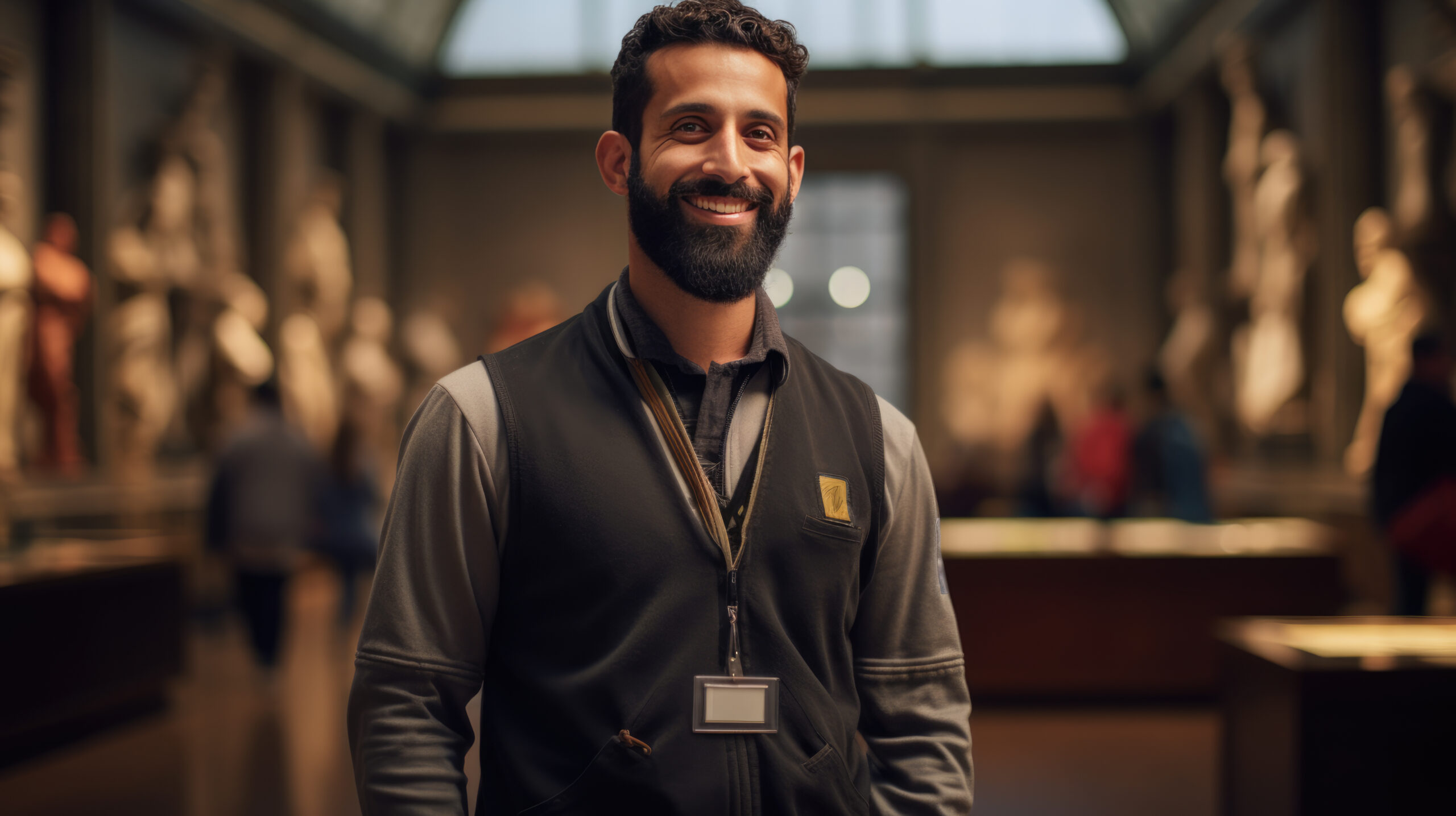As many museums continue to face tighter budgets, finding efficient ways to maintain high standards with limited resources is essential. Staffing costs, a significant part of museum budgets, require innovative approaches to stretch funds without compromising visitor experience or collection care. Strategies such as community-based cooperative volunteer programs, advanced monitoring technology, and flexible digital staff training can all help museums make the most of their resources, supporting their mission and financial sustainability.
Read on for some innovative approaches museums have used to maximize their staffing resources
Volunteer & Co-op Membership Programs
Innovative cooperative volunteer programs offer museums a powerful way to extend their budgets and bring fresh energy to their operations. By involving community members and young people in roles like exhibit guides and event assistants, museums can reduce staffing costs while creating opportunities for engagement and learning. Museums like the Eiteljorg Museum in Indianapolis, The Museum of Russian Art (TMORA) in Minneapolis, the Smithsonian Institution, and the High Museum of Art in Atlanta offer enticing benefits to volunteers, recognizing their critical role in supporting operations and visitor experiences. Volunteers at these museums often receive perks like free or discounted memberships, admission to special events, and shop discounts. These benefits make volunteering a rewarding, mutually beneficial arrangement, encouraging community involvement while allowing volunteers to immerse themselves more deeply in the museum’s offerings.
Leveraging Technology for Staff Efficiency
Museums increasingly leverage advanced digital tools to enhance security and streamline visitor management. These technologies reduce costs, allowing fewer staff to effectively oversee larger areas without compromising safety. Art Sentry’s camera-based protection system, with its audible alerts and discreet guard notifications, enables each guard to monitor up to three times the typical number of galleries. This optimized guard allocation not only safeguards collections but also creates a more seamless, welcoming environment for visitors, enhancing their overall experience.
Extend the Reach of Digital Collections
Digital collections access initiatives, such as the exceptional digital collections offered by the National Gallery of Art, The Getty, and the Rijksmuseum, allow for a broader reach without requiring a physical presence, indirectly aiding in budget management by lowering in-person visitor surges. Creating online school and group tours and bringing museum stores online can help monetize digital visits. While digitizing collections can be intimidating for museums on a budget, programs and grants are available to help.
Some larger museums and organizations have developed programs to assist smaller institutions in digitizing their collections, promoting access and preservation. The Smithsonian Institution’s Digitization Program Office (DPO) provides best practices and resources to museums looking to digitize their collections, supporting them with high-quality imaging techniques and digitization workflows. Similarly, the British Museum offers its expertise to smaller institutions globally through its Knowledge Sharing Program, guiding digitization processes.
Several U.S.-based grant programs fund digitization for smaller museums. The Institute of Museum and Library Services (IMLS) offers Museums for America and Inspire! Grants for Small Museums aimed to support projects that improve collections access, including digitization. The Council on Library and Information Resources (CLIR) provides grants through its Digitizing Hidden Special Collections and Archives program, which funds the digitization of rare and unique content, enhancing public access. The National Endowment for the Humanities (NEH) also offers grants for Humanities Collections and Reference Resources to support digital access to humanities collections. The Digital Empowerment Project for Small Museums, also funded by IMLS, provides training on digital strategies and collections management for smaller institutions.
These initiatives and collaborations help ensure that institutions of all sizes can participate in the digital preservation and sharing of cultural heritage materials across the United States.
Digitally Training Staff for Cost Efficiency
Digital training solutions allow museums to efficiently upskill their employees without the logistical costs of in-person sessions, such as instructor fees, meeting space, and travel reimbursement. Digital modules can be accessed on-demand, making it easier for staff to stay updated on the latest security protocols and operational changes. This flexible format reduces training expenses and ensures that employees receive timely, consistent instruction on new technology, security protocols, and visitor management practices, creating a more agile and knowledgeable workforce.
These examples illustrate how a strategic blend of staffing models, community engagement, and smart technology can impact museums’ operational efficiency and budget management. For more information on maximizing your budget, download our digital guide here.




